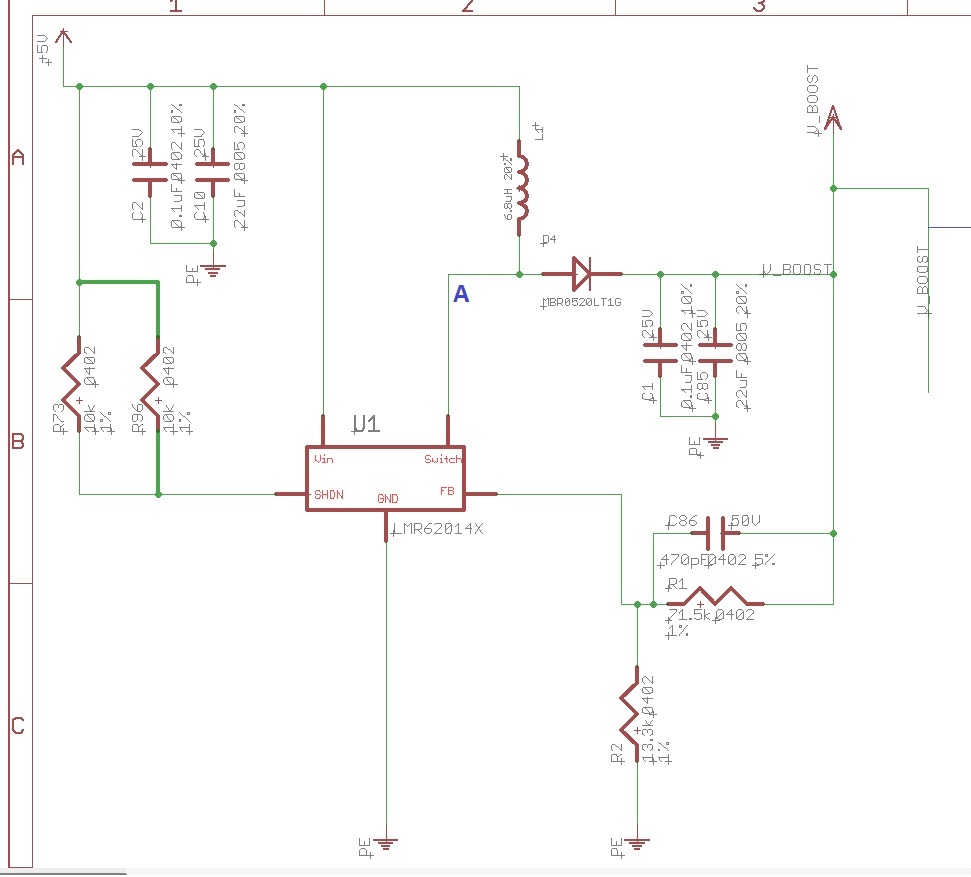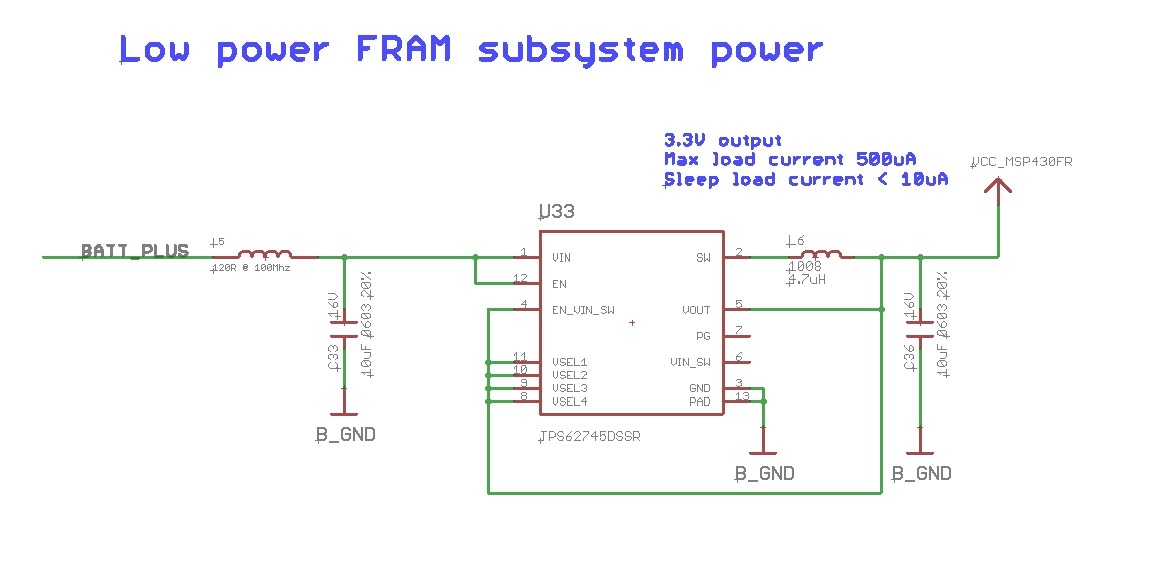Other Parts Discussed in Thread: TPS62745, , MSP430FR2476, ALLIGATOR
Hello,
I have the LMR62014 designed in a product. This part is boosting 5V up to 7.8V. I then have a TPS62745 powered from this 7.8V. There is a sharp transient that is coupling into the output of the TPS62745 because of a sharp transient dip on the output of my boost supply. I can't figure out where this is coming from. I have tested the 62014 with a 50mA load and without a load and this very short glitch/dip is always there. I've attached a few screenshots and my schematic. How should I go about eliminating this noise. I think other than this the 62014 seems to work fine.
Screenshot 1: Ch1 = output of 62014 and ch2 (green) is output of TPS62745 which is powered by the 62014
Screenshot 2: Ch1 = 62014 boost output, ch2= switch node shown as node A in the below schematic.
Screenshot 3: zoomed in version of screenshot 1.
Schematic:
I built up a blank board by hand with ONLY the LMR62014 circuit and I still saw these high frequency dips on the output. I'm a little unsure where to go from here. Does anyone have any troubleshooting advice?




